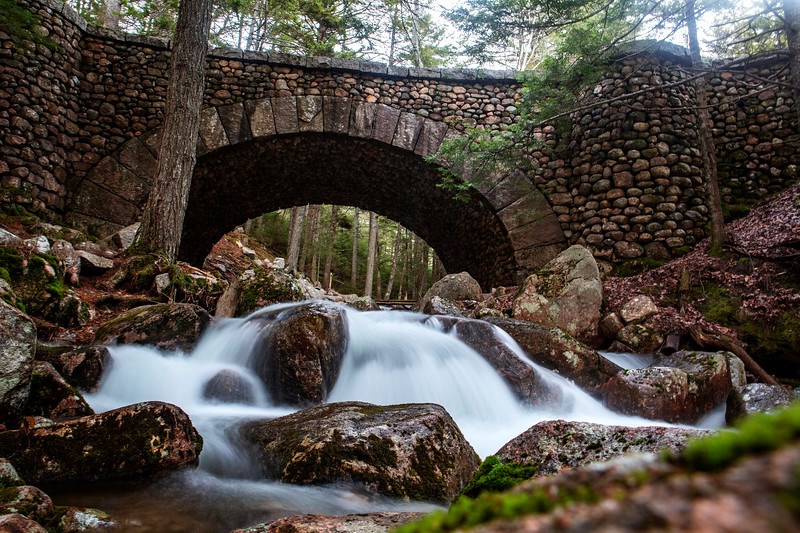
Ashley L. Conti/Friends of Acadia 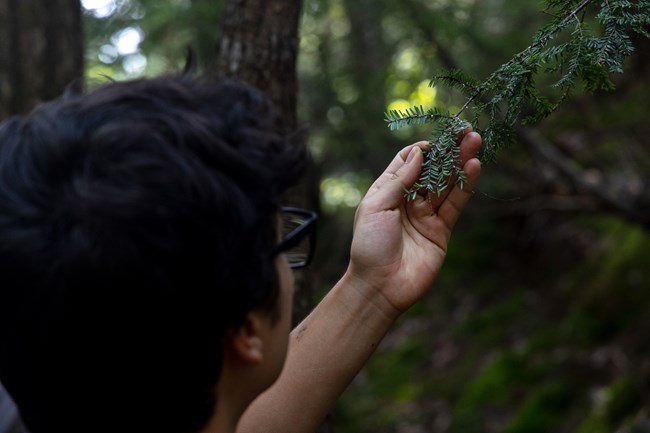
Sam Mallon/Friends of Acadia Species ProfileThe hemlock woolly adelgid (Adelges tsugae) is a non-native, invasive, aphid-like insect. Its life cycle consists of an incomplete metamorphosis in which two generations per year grow from eggs to crawlers to adults.HWA egg sacs are easily identifiable as small, round, woolly orbs on the underside of the needles. When the eggs hatch, adelgids emerge as crawlers, the first mobile instars or developmental stage. Crawlers do the most damage to Eastern hemlocks because they require the sap of the tree to grow. They feed on new branches and twigs during winter and early spring, preventing the production of new needles in the late spring and summer. This is what eventually causes the death of the tree. 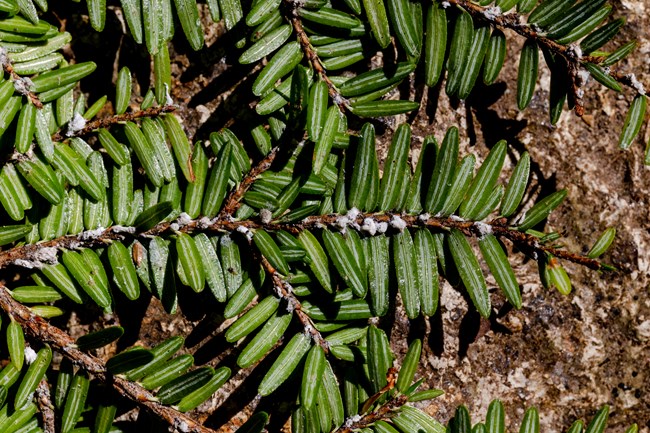
Sam Mallon/Friends of Acadia 
USFS Origin of HWAHWA was accidentally introduced to the United States from Japan, where natural predators and host tree resistance kept the population of A. tsugae in check. It was discovered in the Pacific Northwest as early as the 1920s but has not posed a significant threat to the more resistant western and ornamental hemlocks. On the East Coast, the first recorded sightings occurred in Virginia and Southern Pennsylvania in the 1960s. Until the 1980s, HWA wasn’t recognized as a large-scale problem, but it now covers the extent of the Eastern hemlock’s range from Georgia to Maine.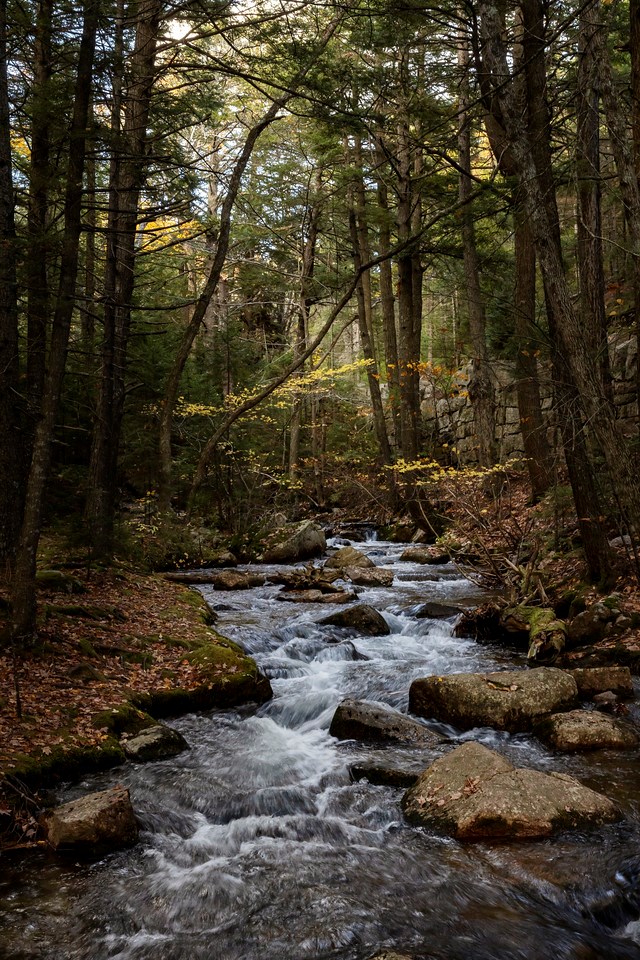
Ashley L. Conti/Friends of Acadia Changing EcosystemsThe Eastern hemlock, Tsuga canadensis, covers an estimated 2.5 million acres of eastern forests. In the southern Appalachian region, where initial infestations of HWA took hold beginning in the 1980s, some NPS sites and national forests reported losing 80-90% of hemlock trees. Mild winters and high population density of susceptible trees contributed to the rapid spread of HWA in this region. The significance of the loss could be seen throughout the ecosystem; when the hemlock forest canopy began to deteriorate, the decline of overall forest health, wildlife habitat, and water quality soon followed.Eastern hemlocks tend to grow near freshwater streams, ponds, and lakes. During the hottest months, the hemlock canopy maintains cooler, more constant water temperature by providing dense cover from the sun. This creates an ideal environment for small invertebrates and cold-water fish. These invertebrates are the major food source for Acadia’s many species of freshwater fish, including brook trout. As hemlocks decline due to an HWA infestation, so do the species that depend on them. 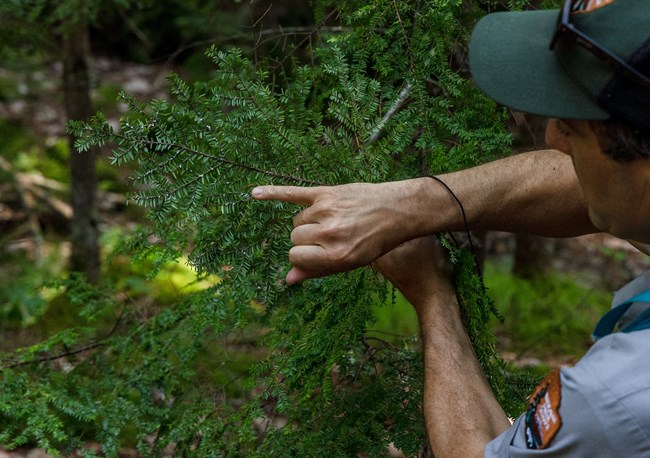
Sam Mallon/Friends of Acadia Managing HWAThe first step to protecting Acadia’s forests from HWA is to locate the areas of hemlock that are most important to protect, such as stands that contain older, dominant canopy trees. Surveying new areas and closely monitoring existing infestations is crucial to understanding the extent of the problem. Park visitors and local landowners have been a great help in identifying and reporting HWA in our area—so know what to look for and who to tell if you have a possible HWA sighting (see contact information below).The Invasive Plant Management Team (IPMT) has also begun cutting back hemlock branches that may come into contact with vehicles, bikers, or pedestrians along roadways and trails. Visitors should continue to buy firewood locally. Slowing the spread and stopping new introductions gives forest managers more time to respond. Since HWA is a non-native insect, it has no predators native to North America. Predation is one form of biological control that maintains the population at a manageable level. Beetle species that feed on the winter generation (Laricobius osakensis) and summer generation (Sasajiscymnus tsugae) of HWA have been introduced to manage infestations in other areas. The USDA found these beetles pose no significant risk to native species and are now reared for release in natural areas. In October 2022, the Land and Garden Preserve released Laricobius beetles along Jordan Stream in an area bordering Acadia National Park. Other national parks such as Shenandoah and Great Smokey Mountains have successfully used chemical controls, or pesticides, to treat individual trees for HWA. Integrated Pest Management, or using a combination of these tools, may be the best approach to help Acadia’s hemlocks survive HWA. Now that the adelgid is here, it will never be completely eradicated—but if we act quickly and thoughtfully, we can prevent the devastating loss that other regions have experienced. How You Can Help
This page was adapted by Emma Lanning from a web article by Sophia Cameron and Jesse Wheeler |
Last updated: February 2, 2023
